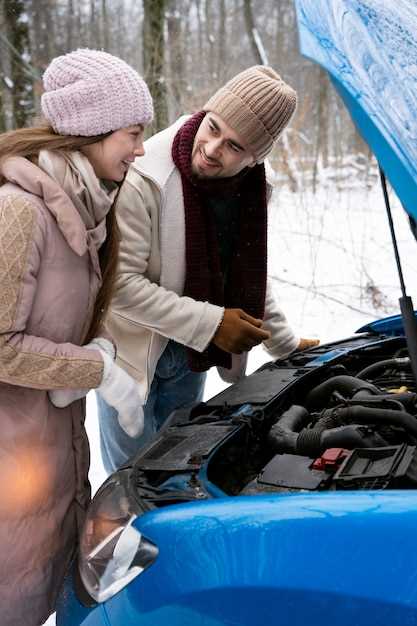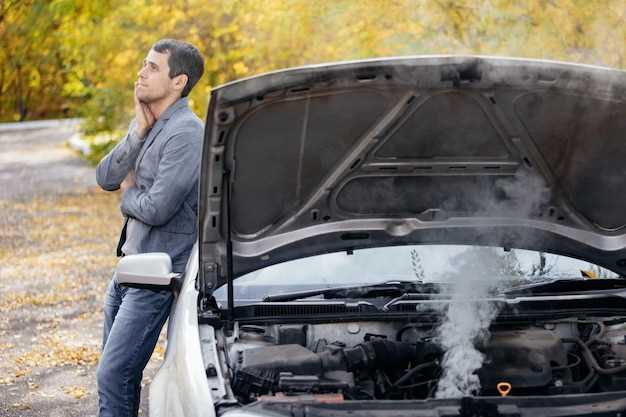Why Your Car Is Overheating and What to Do

One of the most alarming issues a car owner can face is overheating, which often signifies that the engine is reaching dangerous temperature levels. Understanding the common causes of car overheating is crucial for maintaining your vehicle’s health and ensuring safe operation. When the temperature gauge spikes, it can lead not only to costly repairs but also to potentially hazardous situations on the road.
The primary reason for overheating typically stems from a failure in the cooling system. This system relies on various components, such as the radiator, water pump, and thermostat, to efficiently manage the engine’s temperature. When any of these parts malfunction or become obstructed, the car’s engine may struggle to regulate its temperature, leading to overheating.
Another factor contributing to excessive engine temperature is low coolant levels, which can result from leaks or prolonged use without sufficient maintenance. Ensuring proper coolant levels is essential for the vehicle’s thermal regulation. Furthermore, factors like a clogged radiator, damaged hoses, or a malfunctioning thermostat can exacerbate overheating issues. Identifying these problems promptly allows for effective solutions that can extend the life of your engine and improve your vehicle’s overall performance.
Identifying Radiator Issues and Coolant Leaks
The radiator is a crucial component in your vehicle’s cooling system, responsible for dissipating heat from the coolant that flows through it. When the radiator develops issues, it can lead to significant overheating problems, compromising the engine’s performance. Identifying radiator issues early can save you time and money in repairs.
One of the most common signs of radiator problems is visible damage. Look for cracks or corrosion on the radiator’s surface, which can result in coolant leaks. If you notice a puddle of coolant under your vehicle, this is a strong indicator of a leak. Additionally, check for any discolored or rusty coolant in the reservoir, as this may indicate contamination and suggest a failing radiator.
Coolant leaks can also stem from the hoses connected to the radiator. Inspect the hoses for signs of wear, such as fraying or swelling. Any dampness around the hose connections may signal a leak that needs immediate attention. Maintaining proper hose integrity is essential, as worn hoses can lead to rapid coolant loss and subsequent overheating.
Another issue to consider is the radiator cap. A faulty cap can cause insufficient pressure within the cooling system, leading to coolant boiling and overheating. Check the cap for damage and ensure that it fits securely. If necessary, replace it to maintain optimal pressure levels.
If you suspect an overheating problem due to radiator issues or coolant leaks, it is vital to address it promptly. Continuous driving under these conditions can lead to severe engine damage. Regular inspections and maintenance can help prevent radiator-related overheating, ensuring your vehicle runs smoothly and efficiently.
Understanding Thermostat Failures and Their Impact

The thermostat plays a crucial role in regulating the engine’s temperature. It acts as a gatekeeper for coolant flow between the engine and radiator. A properly functioning thermostat opens and closes at the correct temperatures, ensuring that the engine does not overheat or run too cool. However, thermostat failures can lead to significant issues, including engine overheating.
When the thermostat fails to open, coolant flow is restricted, preventing the engine from dissipating heat effectively. This closed state can cause the engine to overheat rapidly, leading to potential damage such as warped cylinder heads or blown gaskets. Conversely, if the thermostat is stuck open, the engine may run too cool, which can impair overall performance and fuel efficiency.
Common symptoms of a thermostat failure include fluctuating temperature readings on the dashboard gauge and unusual heating sounds from the engine area. Regular maintenance and inspection of the thermostat can help identify issues before they result in serious overheating problems. If a thermostat failure is suspected, it is essential to replace it promptly to maintain optimal engine performance.
In summary, understanding the function and potential failures of the thermostat is vital for preventing overheating issues. Keeping the thermostat in good working order is a key step in maintaining your vehicle’s health and avoiding costly repairs.
Recognizing Signs of Water Pump Malfunction

The water pump plays a crucial role in maintaining the engine’s temperature by circulating coolant throughout the cooling system. A malfunctioning water pump can lead to overheating, which can cause severe engine damage. Recognizing the signs of water pump failure early can save you from costly repairs and ensure your vehicle operates smoothly.
One of the primary indicators of a failing water pump is coolant leaks. If you notice puddles of coolant under your vehicle, it could suggest that the pump’s seals are worn out or the pump itself is damaged. Additionally, a consistent drop in coolant levels without visible leaks can also indicate that the water pump is not functioning properly.
Another sign to watch for is an increase in engine temperature. If your dashboard temperature gauge frequently rises to the red zone, it may be due to inadequate coolant circulation, a common issue associated with a malfunctioning water pump. Pay attention to any changes in temperature while driving; an overheating engine requires immediate attention.
Unusual noises can also signal water pump problems. A grinding or whirring sound may indicate that the water pump bearings are wearing out, while a squeaking noise could imply that the pump’s drive belt is loose or damaged. These sounds are often accompanied by a drop in cooling efficiency.
Finally, if you notice steam coming from the engine compartment, it serves as a clear warning that the engine is overheating. This can signify that the water pump is unable to circulate coolant effectively, leading to elevated temperatures and potential engine damage.

